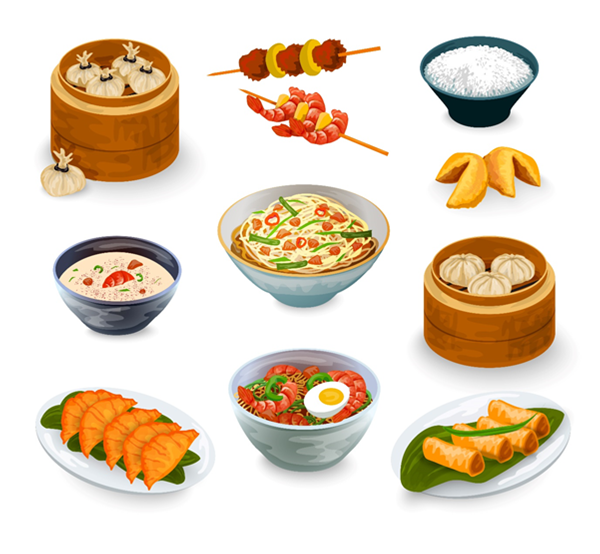Introduction
5°C-60°C is known as the "temperature danger zone", the range of temperature ideal for bacterial growth. Therefore, it is important to keep food, especially those that are ready for consumption, out of the temperature danger zone.
Although thorough cooking of food can remove most bacteria from the food, common bacteria such as Bacillus cereus and Clostridium perfringens can exist in resistant spore form, which cannot be removed by cooking altogether. Bacteria on our skin such as Staphylococcus aureus can also be transferred to the food during the handling of cooked food. These bacteria will multiply rapidly when the food is left at the temperature danger zone and cause food-borne illnesses.
In large numbers, food-borne pathogens can cause food poisoning especially in vulnerable populations such as the young, the elderly and people with weakened immune systems. Symptoms may include stomach cramps, nausea, vomiting, diarrhoea and fever.
Here, we briefly explain the top three most common food-borne pathogens arising from temperature abuse: Bacillus cereus, Staphylococcus aureus and Clostridium perfringens.
Bacillus cereus
Bacillus cereus is a spore-forming bacteria that is widespread in the environment. It can convert into a tough spore form, which enables it to survive extreme temperatures.
Bacillus cereus is often under-reported as most people experience mild symptoms and do not seek medical attention. This bacteria produces two types of toxins; the first type causes diarrhoea and is often associated with meats, milk, vegetables, and fish; the second type causes vomiting and is associated with rice and starchy food. It is therefore important to keep food below the temperature danger zone as the spores can resist high temperatures, such as cooking and reheating, and potentially germinate and multiply in the food later.
Staphylococcus aureus
Staphylococcus aureus is a non-spore forming bacteria that is commonly found in the environment and on our skin, nose, eyes, ears and various body cavities. Its presence in food is often attributed to food handlers with poor personal and food hygiene practices, especially when they handle ready-to-eat food. The risk is higher in ready-to-eat food that are kept at room temperature, such as rojak and toast. In these food, bacteria can rapidly multiply to levels high enough to cause food-borne illnesses when ingested.
Clostridium perfringens
Clostridium perfringens is found in the intestines (and faeces) of humans and animals and is widespread in the environment due to contamination by human and animal faeces. Like Bacillus cereus, Clostridium perfringens can also exist in a spore form that survives any heat treatment such as cooking and reheating. In food, this bacteria grows well in protein-rich dishes and dishes cooked in large quantities such as stews and meat gravy.
Large quantities of food take a longer time to cool down at room temperature, causing the spores to germinate into active cells and multiply rapidly. Hence, when cooking food in large quantities, it is important to rapidly cool the food to limit the growth of Clostridium perfringens. Some methods include dividing food into smaller portions and placing food into shallow pans.
How can we reduce our risk to food-borne illnesses from temperature abuse of cooked food?
To avoid food-borne illnesses from temperature abuse of cooked food, you should observe the following good food safety practices:
- Consume food as soon as possible after cooking
- For food not meant for immediate consumption, quickly refrigerate at 4°C or lower, or keep it warm at 60oC or higher. Refrigeration slows down the growth of food-borne bacteria but it does not kill the bacteria. Re-heat food thoroughly prior to consumption. While thorough heating removes most bacteria, it might not remove all the toxins. Consumers should still consume food as soon as possible after cooking.
- Plan your quantities well when ordering catered food to minimise excessive leftovers, and request for a delivery time that is closer to when the food is intended to be eaten.
- When cooking at home for multiple meals, portion out the amount to be kept after cooking, and cool and refrigerate the food quickly.
 Storing cooked food out of the ‘temperature danger zone’ limits the growth of food-borne bacteria.
Storing cooked food out of the ‘temperature danger zone’ limits the growth of food-borne bacteria.
Photo credit: Freepik.com